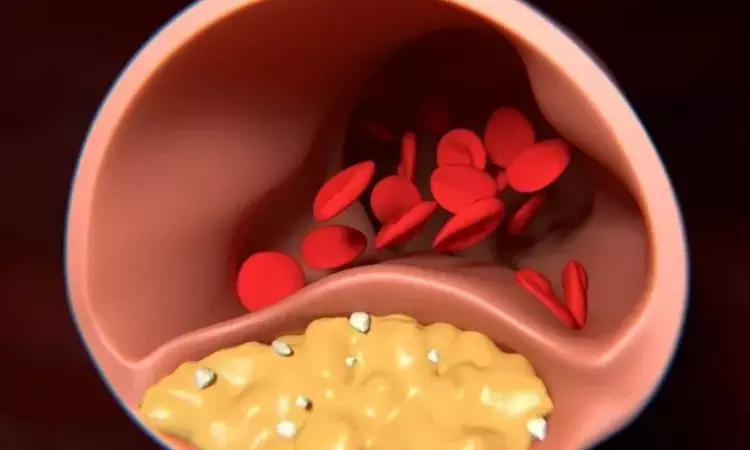- Home
- Medical news & Guidelines
- Anesthesiology
- Cardiology and CTVS
- Critical Care
- Dentistry
- Dermatology
- Diabetes and Endocrinology
- ENT
- Gastroenterology
- Medicine
- Nephrology
- Neurology
- Obstretics-Gynaecology
- Oncology
- Ophthalmology
- Orthopaedics
- Pediatrics-Neonatology
- Psychiatry
- Pulmonology
- Radiology
- Surgery
- Urology
- Laboratory Medicine
- Diet
- Nursing
- Paramedical
- Physiotherapy
- Health news
- Fact Check
- Bone Health Fact Check
- Brain Health Fact Check
- Cancer Related Fact Check
- Child Care Fact Check
- Dental and oral health fact check
- Diabetes and metabolic health fact check
- Diet and Nutrition Fact Check
- Eye and ENT Care Fact Check
- Fitness fact check
- Gut health fact check
- Heart health fact check
- Kidney health fact check
- Medical education fact check
- Men's health fact check
- Respiratory fact check
- Skin and hair care fact check
- Vaccine and Immunization fact check
- Women's health fact check
- AYUSH
- State News
- Andaman and Nicobar Islands
- Andhra Pradesh
- Arunachal Pradesh
- Assam
- Bihar
- Chandigarh
- Chattisgarh
- Dadra and Nagar Haveli
- Daman and Diu
- Delhi
- Goa
- Gujarat
- Haryana
- Himachal Pradesh
- Jammu & Kashmir
- Jharkhand
- Karnataka
- Kerala
- Ladakh
- Lakshadweep
- Madhya Pradesh
- Maharashtra
- Manipur
- Meghalaya
- Mizoram
- Nagaland
- Odisha
- Puducherry
- Punjab
- Rajasthan
- Sikkim
- Tamil Nadu
- Telangana
- Tripura
- Uttar Pradesh
- Uttrakhand
- West Bengal
- Medical Education
- Industry
Higher triglyceride glucose index tied to subclinical atherosclerosis in healthy adults: Study

China: Researchers in a study published in BMC Cardiovascular Disorders showed an independent association between triglyceride/glucose index (TyG index) and arterial stiffness in a relatively healthy Japanese population. The arterial stiffness was measured by brachial-ankle pulse wave velocity (baPWV).
"The findings suggest that insulin resistance (IR) is involved in subclinical atherosclerosis and can be used as a target for the prevention of major cardiovascular disease (CVD)," Xingping Yang, The First Affiliated Hospital of Guangdong Pharmaceutical University, Guangzhou, China, and colleagues wrote in their study.
The study was conducted with the objective to evaluate the relationship between the TyG index and atherosclerosis in Japanese adults, as measured based on the brachial-ankle pulse wave velocity (baPWV).
For this purpose, the researchers selected a total of 912 participants from the NAGALA (NAFLD in Gifu Area, Longitudinal Analysis) study conducted from 2004 to 2012. The relationship between the TyG index and baPWV was estimated using a logistic model.
The researchers also performed subgroup analyses by sex, age, body mass index (BMI), total cholesterol, low-density lipoprotein cholesterol, estimated glomerular filtration rate (eGFR), and fatty liver. The formula for TyG index was ln (½fasting triglyceride level [mg/dL] × fasting plasma glucose level [mg/dL]).
The findings of the study were as follows:
· A linear relationship between TyG and baPWV was discovered after adjusting for underlying confounders.
· An increased risk of baPWV was observed after adjusting for sex, age, BMI, systolic blood pressure, diastolic blood pressure, high-density lipoprotein cholesterol, fatty liver, eGFR, and TyG as a continuous variable (adjusted odds ratio [adj OR], 1.57).
· Compared with the TyG index in the first tertile, the probabilities of subjects in the third tertile that developed to baPWV were 1.78-fold higher (adj OR 1.78).
· Stable associations were observed between the TyG index and baPWV in different variables through subgroup analyses.
"The highest tertile (above 8.57) of the TyG index was positively and linearly related to subclinical atherosclerosis in Japanese adults and may be valuable as a predicted marker," the researchers wrote.
The authors wrote in their study's conclusion, "the findings indicate that IR is involved in subclinical atherosclerosis and might be an important target for preventing major CV disease. Still, the determination of the exact nature of this involvement will require longitudinal studies."
Reference:
Yang, X., Gao, Z., Huang, X. et al. The correlation of atherosclerosis and triglyceride glucose index: a secondary analysis of a national cross-sectional study of Japanese. BMC Cardiovasc Disord 22, 250 (2022). https://doi.org/10.1186/s12872-022-02685-8
Dr Kamal Kant Kohli-MBBS, DTCD- a chest specialist with more than 30 years of practice and a flair for writing clinical articles, Dr Kamal Kant Kohli joined Medical Dialogues as a Chief Editor of Medical News. Besides writing articles, as an editor, he proofreads and verifies all the medical content published on Medical Dialogues including those coming from journals, studies,medical conferences,guidelines etc. Email: drkohli@medicaldialogues.in. Contact no. 011-43720751


